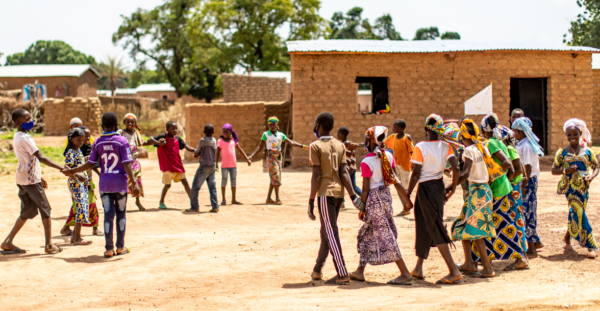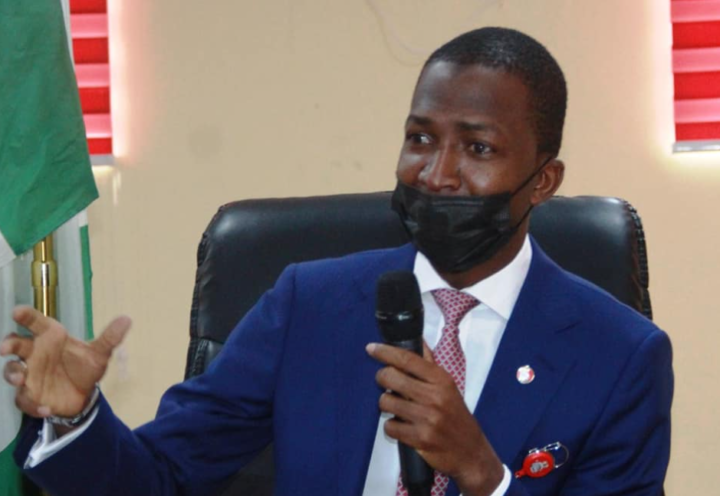BY CYNTHIA SAMUEL-OLONJUWON
One in five African children is engaged in child labour, according to the latest global estimates, more than in the rest of the world combined. More needs to be done to eliminate child labour in Africa and globally by 2025.
Children engaged in child labour endure long working hours – sometimes more than 12 hours a day – with not much to eat and little time to rest. In the mining sector, child labourers have no choice but to live near mining sites, in makeshift camps, where they are exposed to toxic chemicals, unsanitary conditions and disease.
In agriculture, children as young as five endure hours of work, using dangerous tools, such as machetes, and are exposed to pesticides, or carry heavy loads on their backs. These are unacceptable conditions and, sadly, children in Africa are more likely to be involved in child labour.
Advertisement
According to the Child Labour: Global estimates 2020, trends and the road forward, a report released by the International Labour Organization (ILO) and UNICEF, 40 million girls and 52 million boys were involved in child labour in the African continent at the beginning of 2020, an increase of 20 million children in the last four years. This means there are now more children in child labour in Africa than in the rest of the world combined. One in five African children is engaged in child labour, with more than 80% involved in agriculture, for or alongside family members.
Despite earlier progress, the report shows a dramatic rise in child labour in Africa since 2016. Unless urgent measures are taken, and taken quickly, millions more children remain at risk of being pushed into child labour, as a result of the COVID-19 pandemic.
“There is no justification for child labour in the 21st Century. It constitutes a violation of the rights of children: the right to play; the right to go to school; the right to health; the right to have a protected childhood, as established in ILO Conventions No 138 and 182. And of course in the UN Convention on the Rights of the Child,” said Guy Ryder, Director-General of the ILO.
Advertisement
Why are the numbers in Africa so high? There is no simple explanation. Evidence has shown that the drivers of child labour on the continent are multiple and interconnected.
Poverty is the main driver of child labour and inequality remains persistently high in many African countries. In terms of working poverty, and according to the latest ILO estimates, almost 154 million people, or more than 34% of working-age Africans, suffered from extreme working poverty in 2020, earning less than $1.90 US per day. Parents and families who struggle to make ends meet often enlist their own children in work, as they cannot afford to send them to school. The COVID‑19 crisis has reversed progress made in reducing poverty in Africa. In 2020, extreme working poverty is estimated to have risen to 34%, from 31.8% a year earlier.
Africa is also the youngest continent. Rapid population growth has placed huge pressure on the region’s ability to extend education access and social protection coverage – despite a strong commitment to spending on both. Progress on providing decent jobs for adults and reducing child labour has also slowed.
Child labour occurs frequently in the informal economy, which is characterized by lower and less regular incomes, inadequate and unsafe working conditions, precarious jobs and exclusion from social security schemes – all of which can contribute to a family’s dependence on child labour. Informality remains a challenge in all regions, but more so in Africa, where 86% of African jobs are in the informal economy – more than in any other region.
Advertisement
Evidence has shown that increased social protection, access to free quality education, health care, access to decent job opportunities for adults, and access to basic services create an enabling environment that reduces household vulnerability to child labour.
Finally, there is a correlation between child labour and fragility. The majority of countries in fragile and conflict-affected situations are located in Africa; one-quarter of Sub-Saharan African countries were defined as being in such situations every year from 2015-2020. In addition, 39% of the world’s refugees, asylum seekers, returnees, stateless persons and internally displaced persons live in Sub-Saharan Africa.
The situation is dire, but not irreversible. Only with urgent, coordinated and scaled-up action can child labour trends improve.
To this end, the ILO has launched an ambitious strategy to accelerate social protection in Africa, which advocates for increased spending on social protection and other measures to ensure that coverage in Africa reaches 40% by 2025. The Africa Regional Social Protection Strategy, 2021-2025 is a social protection coverage acceleration framework to achieve the SDGs and calls for people-centered policies, with an emphasis on income redistribution to fight growing inequalities that have been amplified by the COVID-19 pandemic.
Advertisement
The ILO and UNICEF are also calling for universal access to free quality education, decent work for adults and young people of legal working age, a renewed focus on combatting child labour in agriculture, better laws to protect children, effective enforcement and comprehensive child protection systems.
2021 is the International Year for the Elimination of Child Labour. This year, the ILO and the African Union have jointly convened regional consultations for Africa to provide member states and all other stakeholders the opportunity to examine the challenges and concrete actions required for the elimination of child labour in the region. The forum also provides an opportunity to define the priorities for the continent ahead of the V Global Conference on Child Labour, to be held, for the first time in Africa, in May 2022.
Advertisement
Without urgent, coordinated action, Africa will not be on track to reach Target 8.7 of the Sustainable Development Goals, which commits all UN Member States to take urgent measures to eradicate forced labour, modern slavery and the worst forms of child labour. Without accelerated and strategic action, as outlined in the African Union’s Ten Year Action Plan to Eradicate Child Labour, Forced Labour, Human Trafficking and Modern Slavery (2020-2030), close to 105 million children in Africa alone will be in child labour in 2025. We simply cannot stand by and let this happen.
In the words of former child labourer and activist Dibou Faye of Senegal: “Child labour destroys dreams, stifles talents, and increases poverty.”
Advertisement
We must all do our part to put an end to child labour and ensure a better future for the children of Africa.
Cynthia Samuel-Olonjuwon is the assistant director-general and regional director for Africa, International Labour Organisation
Advertisement
Views expressed by contributors are strictly personal and not of TheCable.
Add a comment






